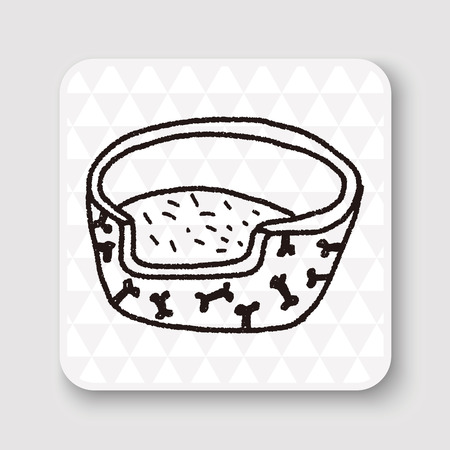1. Why Crockpot-to-Campfire Meals Are a Game-Changer
If you love camping but dread the hassle of cooking every meal from scratch at your campsite, crockpot-to-campfire meals might just be your new best friend. By prepping meals at home using a slow cooker, you can bring hearty, flavorful dishes to the great outdoors and simply reheat them over your campfire. Its a total game-changer for campers who want to spend less time cooking and more time soaking up nature.
Less Stress, More Relaxation
One of the biggest perks of this approach is cutting down on stress at the campsite. Forget about chopping veggies or marinating meat while swatting away mosquitoes. With everything cooked and ready to go, all you need is a pan or foil packet and some firewood. Just heat it up and dig in.
Flavor That Gets Better With Time
Slow cooker meals are known for their deep, developed flavors. Whether it’s beef stew, pulled pork, or chili, these dishes often taste even better after sitting overnight. That means by the time youre enjoying them around the fire, theyre at peak deliciousness.
More Time for the Outdoors
No one goes camping to spend hours over a cutting board. Prepping meals beforehand gives you back precious time to hike, fish, kayak—or just relax by the fire with a good book or your favorite people.
Benefits at a Glance
| Benefit | Why It Matters |
|---|---|
| Prepped Ahead of Time | Saves time and effort at the campsite |
| Easy Reheat Over Fire | No complicated cooking required—just warm it up |
| Rich, Developed Flavors | Dishes taste even better after resting |
| Less Cleanup | Fewer pots and utensils needed outdoors |
| More Free Time | Enjoy nature instead of being stuck cooking |
Pro Tip:
Store your crockpot meals in zip-top freezer bags or airtight containers so they’re easy to pack in your cooler. Label them clearly so you know what’s what when it’s time to eat!
2. Gear Up: What You’ll Need to Transition from Kitchen to Campfire
When youre prepping meals at home to enjoy later around the campfire, having the right gear is just as important as the food itself. The goal? Keep your meals fresh during transport and make reheating over a fire a breeze. Heres a quick rundown of the essentials you’ll want to pack.
Food Storage: Keeping It Fresh
Before you even think about heating up your crockpot chili or pre-made foil packs, you need to get your storage game on point. Airtight and leak-proof containers are a must. Look for BPA-free plastic or stainless steel options that can handle temperature swings without cracking or leaking.
Top Picks for Storage Containers
| Type | Best For | Why It Works |
|---|---|---|
| Plastic Snap-Lid Containers | Soups, stews, sauces | Lightweight and easy to stack in coolers |
| Glass with Silicone Sleeves | Casseroles, pasta dishes | Can go from fridge to fire-safe cookware |
| Vacuum-Sealed Bags | Marinated meats, veggies | Saves space and reduces mess |
Coolers & Ice Packs: Temperature Control Matters
If youre bringing perishable items, keeping them cold until its time to reheat is crucial. A high-quality cooler paired with reusable ice packs will do the trick. YETI, Coleman, and RTIC all make solid choices that can hold temps for days.
Campfire Cookware: From Prepped to Perfectly Reheated
The right tools can turn your pre-cooked meal into a fire-side feast. You don’t need a full kitchen setup—just a few smart pieces of gear that can take the heat (literally).
Essential Cookware List
| Item | Use Case | Pro Tip |
|---|---|---|
| Cast Iron Skillet or Dutch Oven | Reheating stews, searing meats, baking cornbread | Pre-season it at home so it’s ready to go! |
| Grill Grate or Camp Grill Stand | Heating foil packs or pots over open flame | A foldable one saves space in your gear bin |
| Foil Pans & Heavy-Duty Aluminum Foil | Baking, roasting, easy cleanup options | Doubles as both cooking vessel and serving tray |
Utensils & Heat Tools: Don’t Forget the Basics
You’ve got the food and the cookware—but don’t forget those little extras that make campfire cooking easier (and safer!). Tongs, long-handled spoons, heat-resistant gloves, and even a meat thermometer can be game-changers when working with an open flame.
Packing Tip:
Create a “camp kitchen” tote with your go-to tools so you’re not scrambling once the fire’s lit. That way everything has its place—from oil spray bottles to potholders—and you’re ready for anything.
The right gear bridges the gap between your home kitchen and your campsite fire ring. With some simple planning and smart packing, you’ll set yourself up for delicious outdoor meals without the hassle.
![]()
3. Top Crockpot Recipes Perfect for Campfire Reheating
One of the best parts about prepping your meals at home before heading to the campsite is how easy it makes life around the fire. Crockpot dishes are ideal because they’re hearty, flavorful, and get even better after a day or two. Here are some tried-and-true favorites that will have everyone coming back for seconds.
🔥 Crowd Favorites That Travel Well
These recipes are not only delicious but also pack well in coolers and reheat beautifully over a campfire or portable grill. Whether youre feeding a hungry family or a group of friends, these meals hit the spot after a long day outdoors.
🍲 Go-To Crockpot Meals for Campfires
| Recipe | Main Ingredients | Why It Works |
|---|---|---|
| Classic Beef Chili | Ground beef, beans, tomatoes, chili powder | Flavor deepens over time, thick texture reheats easily |
| Pulled Pork | Pork shoulder, BBQ sauce, onions, spices | Tender meat stays juicy; great in sandwiches or tacos |
| Hearty Beef Stew | Beef chunks, potatoes, carrots, celery, broth | A full meal in one pot; easy to portion and heat |
| White Chicken Chili | Chicken breast, white beans, green chiles, cream cheese | Creamy and mild; a hit with kids and adults alike |
| Lentil & Veggie Stew (Vegan) | Lentils, tomatoes, carrots, spinach, spices | Nutritious and filling; plant-based option for everyone |
🔥 Reheating Tips Over the Fire
- Use heavy-duty foil pans or a cast iron skillet: They distribute heat evenly and hold up to open flames.
- Add a splash of water or broth if needed: This helps restore moisture lost during storage.
- Keep stirring: Prevent sticking or burning by mixing often when reheating thicker dishes like chili or stew.
- Lid it up: Cover your pan with foil while heating to trap heat and warm food faster.
Pro Tip:
If you’re tight on cooler space, freeze your crockpot meals in zip-top bags flat. They’ll act as ice packs and thaw slowly—perfect timing for dinner on day two!
No matter which recipe you choose, having these meals prepped ahead means more time enjoying nature and less time cooking at camp. These dishes taste even better surrounded by trees and stars.
4. Campfire Reheating Tips and Safety Guidelines
Reheating your prepped crockpot meals over a campfire can be both easy and rewarding—as long as you follow a few simple guidelines to keep your food safe and tasty. Whether youre using foil packets, cast iron skillets, or grill grates, the key is even heating and attention to safety.
🔥 Best Methods for Reheating Over the Fire
Different types of meals call for different reheating methods. Heres a quick breakdown of popular approaches:
| Method | Best For | Tips |
|---|---|---|
| Foil Packets | Stews, casseroles, shredded meats | Wrap tightly and place near hot coals (not direct flame) for even heating |
| Cast Iron Skillet | Pasta dishes, stir-fry, breakfast hash | Use oil or butter to prevent sticking; stir occasionally to avoid burning |
| Campfire Grill Grate | Chili, soups in pots, foil containers | Keep heat moderate and use a lid or foil cover to retain moisture |
🌡️ Safe Reheating Temperatures
To ensure your food is safe to eat, it’s important to reheat it to the proper internal temperature:
- Poultry & Stuffing: 165°F (74°C)
- Beef, Pork, Lamb: 145°F (63°C)
- Sauces, Soups & Stews: Bring to a rolling boil
- Leftovers (general): At least 165°F (74°C)
A compact digital food thermometer is a great tool to pack with your camp kitchen gear.
🔥 Campfire Safety Reminders
- Never leave food unattended over the fire.
- Avoid flare-ups: Keep flammable items like oil-soaked paper towels away from open flames.
- Create heat zones: Use hot coals for reheating rather than direct flames for better control.
- Always use heat-resistant gloves or tools: Cast iron and foil get extremely hot fast.
🧊 Food Storage Before Reheating
If youre prepping meals at home and storing them in coolers before hitting the campfire, keeping them at safe temperatures is critical. Here are some cooler tips:
- Use plenty of ice or ice packs: Keep food below 40°F (4°C).
- Pack meals in airtight containers or sealed bags: This helps prevent cross-contamination and freezer burn.
- Avoid opening the cooler often: Each time you open it, warm air gets in—keep it closed as much as possible.
With these tips, youll be able to turn your make-ahead crockpot creations into satisfying campfire meals that are just as delicious under the stars as they were in your kitchen.
5. Storage, Packing, and Food Safety for the Road
When youre prepping meals at home to reheat over a campfire, keeping your food fresh and safe during travel is just as important as cooking it right. Whether it’s pulled pork from your crockpot or pre-made chili, proper storage and packing will make sure your meal tastes great—and doesn’t make anyone sick.
Keep It Cold: Chill Before You Pack
Before you even think about loading up the cooler, make sure all your meals are fully chilled in the fridge. Packing warm or room-temperature food can raise the coolers internal temperature, putting everything inside at risk. Pro tip: refrigerate overnight before your trip.
The Right Cooler Makes a Difference
Not all coolers are created equal. For longer trips or hotter climates, consider using a high-performance cooler that retains ice for several days. Use block ice or reusable ice packs instead of loose ice—they melt slower and keep things drier.
Cooler Packing Tips
| Packing Tip | Why It Matters |
|---|---|
| Pre-chill your cooler | A cold cooler keeps food colder longer |
| Layer ice on the bottom and top | Ensures even cooling throughout the cooler |
| Use airtight containers or vacuum-sealed bags | Prevents leaks and cross-contamination |
| Separate raw meats from ready-to-eat meals | Avoids potential foodborne illnesses |
Safe Temps = Safe Eating
The USDA recommends keeping cold foods below 40°F (4°C). Bring along a cooler thermometer so you can monitor temps—especially on long drives or hot days. Once at camp, only take out what you plan to cook right away and return leftovers to the cooler ASAP.
Transport Like a Pro
If youre traveling more than an hour, keep your cooler in the air-conditioned part of your vehicle—not the trunk. Avoid opening it too often to preserve the cold air inside. For extra safety, label your containers with what’s inside and when it was made.
Quick Checklist Before You Hit the Road:
- [ ] Meals fully chilled overnight
- [ ] High-quality cooler packed with block ice or ice packs
- [ ] Raw meats stored separately from other foods
- [ ] Cooler placed in air-conditioned area of vehicle
- [ ] Thermometer packed to monitor temps at camp
Following these simple steps helps ensure your homemade meals stay safe and delicious from your fridge all the way to your campfire dinner plate.


